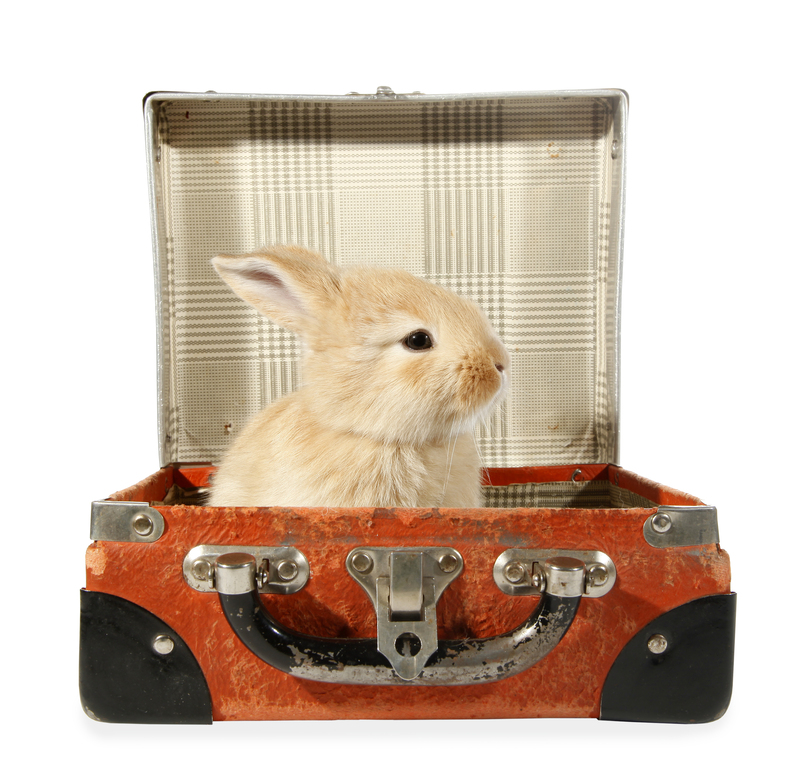Pack Your Home with Ease: Top Moving Strategies
Posted on 18/05/2025
Pack Your Home with Ease: Top Moving Strategies
Relocating can often feel overwhelming, but with the right packing strategies, you can transform your moving day from chaotic to calm. Whether you're moving across town or the country, learning how to properly pack your home with ease is key to a smooth transition and protecting your cherished belongings. This comprehensive guide will walk you through expert moving tips, from organizing your items to unpacking joyfully in your new home.

Why Are Smart Packing Strategies Important?
Successful moves don't happen by accident. Packing your home efficiently is essential to:
- Minimize stress on moving day
- Reduce the risk of damage to your items
- Keep your possessions organized during the move
- Save both time and money
- Enable a smoother unpacking process
Read on for expert strategies and practical advice to move your home with confidence.
1. Start Early and Make a Packing Plan
Assess and Prioritize
The best way to pack your house for moving is to start as early as possible. Take inventory of what you have and prioritize your packing schedule. Items you use infrequently (like holiday decorations or off-season clothes) should be packed first, while everyday essentials are saved for last.
- Create a packing timeline - Mark your calendar with target dates for each room.
- List supplies needed - Boxes, tape, bubble wrap, markers, and specialty containers.
Declutter as You Go
Use this move as a chance to simplify your life. Sort belongings into "keep," "donate," "sell," or "discard" piles. Less stuff to move means less to pack, saving time and moving costs.
- Host a garage sale or sell online for extra cash.
- Donate usable items to charity organizations.
- Recycle or discard broken or unusable goods.
2. Gather the Right Packing Supplies
High-quality packing materials are your best friends during a move. Here's a comprehensive list to ensure your items are safe and sound:
- Sturdy boxes in various sizes
- Bubble wrap and packing peanuts
- Heavy-duty packing tape
- Permanent markers for labeling
- Furniture pads and moving blankets
- Stretch wrap for larger items
- Specialized containers: wardrobe boxes, dish packs, mattress bags
Pro Tip:
Don't forget to collect free boxes from grocery stores or friends--but always inspect them for durability before use. Fragile items deserve top-quality new boxes.
3. Master the Art of Packing Each Room
Packing your home efficiently is all about tackling one room at a time. Let's break down some effective room-by-room packing strategies:
Living Room
- Remove and secure electronics. Use original boxes if available, or wrap in bubble wrap and label cables in separate zip bags.
- Disassemble larger furniture and keep screws/nuts in labeled bags taped to the furniture.
- Roll rugs tightly and secure with plastic wrap.
Kitchen
- Use dish pack boxes for fragile glassware and plates.
- Pack spices and pantry dry goods in sealable bags to prevent spills. Dispose of perishables or give away before the move.
- Protect appliances by removing detachable parts and wrapping cords securely.
Bedrooms
- Wardrobe boxes let you move clothes on hangers with ease.
- Pack off-season clothing first; keep a suitcase of essentials for moving day and first nights at your new home.
- Wrap mirrors and framed art in brown paper and bubble wrap, storing them vertically in labeled boxes.
Bathrooms
- Seal open bottles of toiletries with tape to prevent leaks.
- Pack essential medications and toiletries separately for easy access.
General Packing Tips
- Heavier items in smaller boxes, lighter in larger boxes.
- Fill empty spaces in boxes with towels or packing paper to avoid shifting during transport.
- Label boxes clearly with contents and destination room.
4. Label Everything Clearly
One of the top moving strategies is thorough labeling. Use a system so boxes land in the correct new rooms and are easy to unpack:
- Write room name and contents on each box.
- Use color-coded tape or stickers for quick visual sorting.
- Mark boxes holding fragile items clearly on all sides.
Pro Tip: Inventory List
Keep a master inventory list--a spreadsheet or notebook--plotting the number and contents of each box. This prevents losses and ensures efficient unpacking.
5. Protect Your Most Valuable Items
When you pack your home with ease, extra care should be taken with precious possessions. For items of high monetary or sentimental value:
- Transport them personally if possible (e.g., jewelry, important documents, heirlooms).
- Invest in specialty boxes or cases for electronics and artwork.
- Get adequate insurance for especially valuable or fragile goods.
6. Don't Forget the Essentials Box
Your "first night box" is a true lifesaver. This should contain everything you'll need immediately at your new home:
- Bed linens and pillows
- Toiletries and medications
- Snacks, bottled water, and disposable plates/cups
- Basic tools and scissors
- Chargers for phones and devices
- Change of clothes for each family member
- Important documents and keys
7. Hire Help or Recruit Friends
Depending on your budget and move size, you may wish to:
- Hire professional packing services (they supply materials and expertise)
- Use a moving company with insurance for added peace of mind
- Ask friends and family to help you pack and load
Be sure to schedule your helpers in advance, and provide refreshments on moving day. A little gratitude goes a long way!
8. Take Care of Yourself During the Move
Amidst planning, boxing, and heavy lifting, it's easy to overlook your well-being. Remember to:
- Stay hydrated and take regular breaks
- Wear comfortable, sturdy shoes and appropriate clothing
- Lift with your legs--not your back!
- Get plenty of sleep in the days leading up to your move
9. Unpacking Smart: Settle in Quickly
Once you arrive at your new home, reverse your process by unpacking the most essential areas first (kitchen and bathroom), then bedrooms, followed by living spaces. Use your inventory and clearly labeled boxes to streamline the process.
- Return furniture to assembly using stored screws/nuts.
- Check for damage and report to your movers or insurance company, if necessary.
Remember: Take your time! Unpack at a comfortable pace and make your new house a home, one room at a time.
Moving with Pets and Kids? Special Strategies
Packing and Moving with Children
- Prepare young children for the move with storybooks or discussions about the new home.
- Set aside one or two familiar toys to keep with them.
- Pack their rooms last and unpack them first at the new house for comfort.
Packing and Moving with Pets
- Keep pets in a quiet space on moving day to minimize stress.
- Move them with you in the car if possible, along with their food and favorite toys.
- Set up their space at your new home before letting them explore.

Bonus: Eco-Friendly Moving Strategies
Looking to minimize your move's environmental impact? Try these green packing tips:
- Use towels, blankets, or clothing to cushion boxes instead of bubble wrap.
- Rent plastic moving bins instead of buying cardboard boxes.
- Recycle packing materials or donate them to others after your move.
- Limit unnecessary trips by consolidating loads efficiently.
Conclusion: Pack Your Home with Ease and Confidence
By applying these top moving strategies, you can pack your home for moving in a way that's not just efficient, but also stress-free and organized. Remember to start early, stay systematic, and seek assistance when needed. Careful preparation can turn even the biggest move into a smooth journey toward your new adventure. Bookmark this guide, check off each step, and embrace your new home with excitement!
Looking for more moving tips? Share your questions or stories in the comments below--happy moving!



